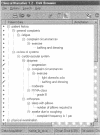Abstract
Routine capture of patient data for a computer-based patient record system remains a subject of study. Time constraints that require fast data entry and maximal expression power are in favor of free text data entry. However, using patient data directly for decision support systems, for quality assessment, etc. requires structured data entry, which appears to be more tedious and time consuming. In this paper, a prototype clinical data entry application is described that combines free text and structured data entry in one single application and allows clinicians to smoothly switch between these two different input styles. A knowledge base involving a semantic network of clinical data entry terms and their properties and relationships is used by this application to support structured data entry. From structured data, sentences are generated and shown in a text processor together with the free text. This presentation metaphor allows for easy integrated presentation of structured data and free text.
Full text
PDF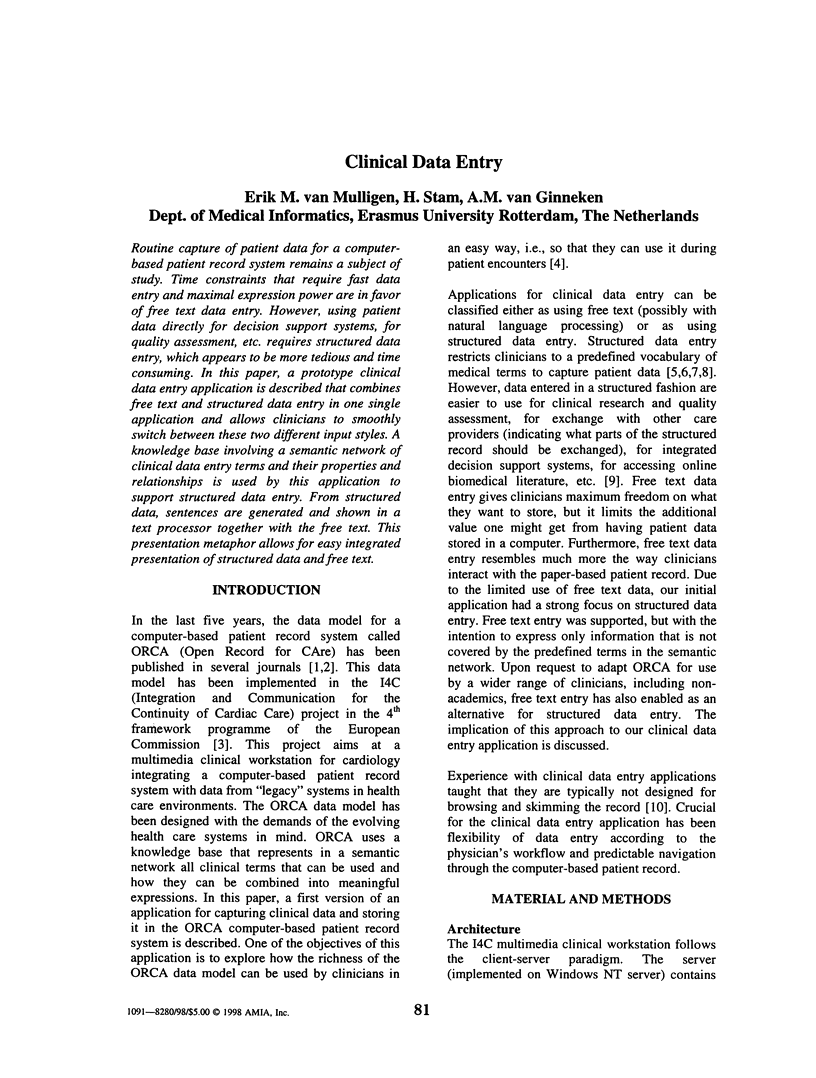
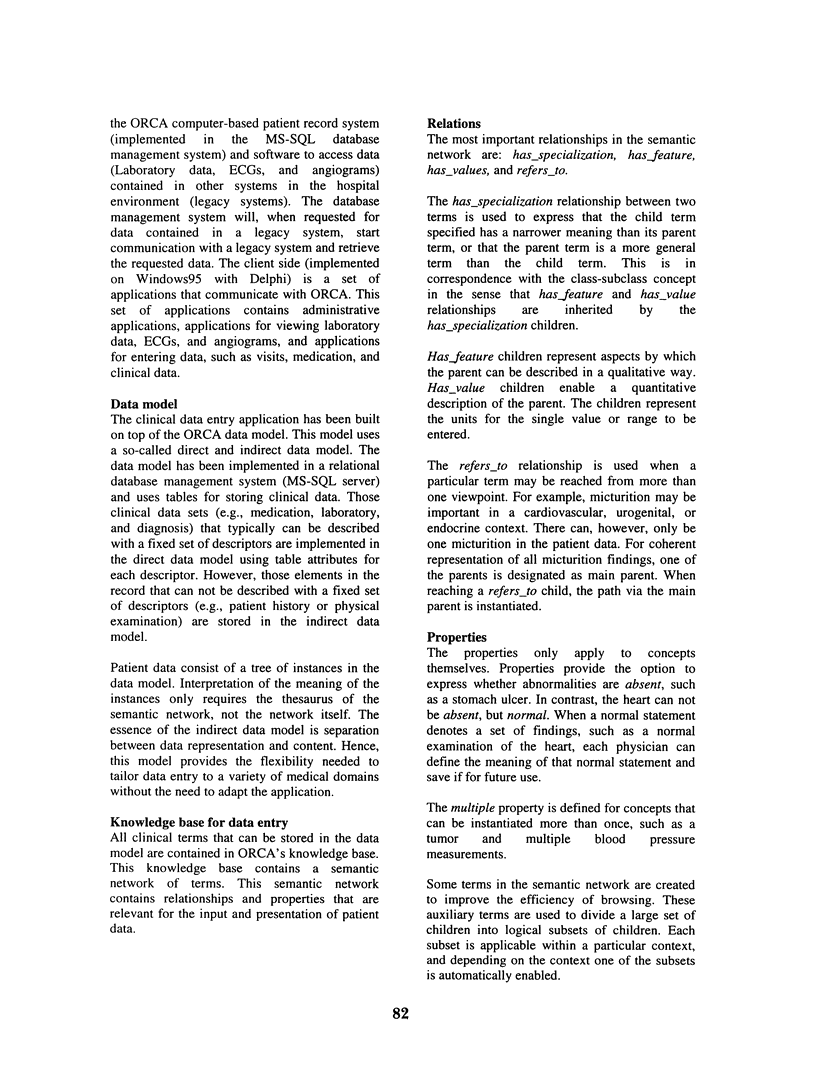
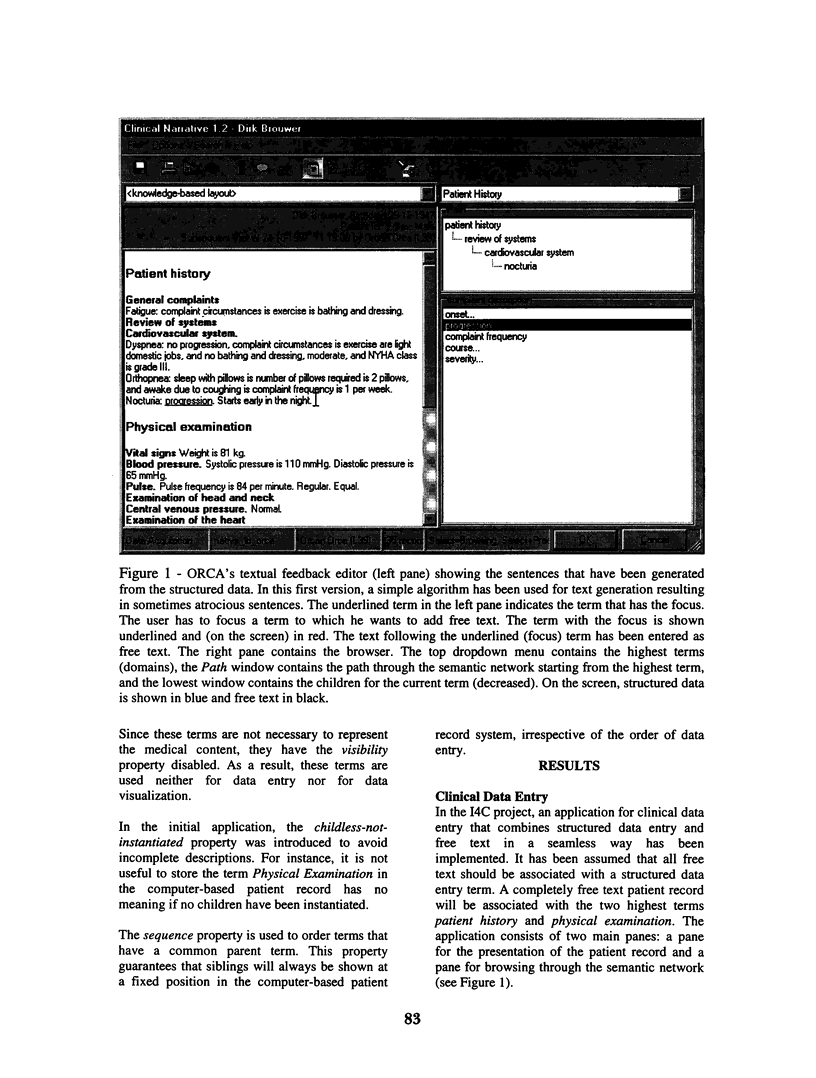
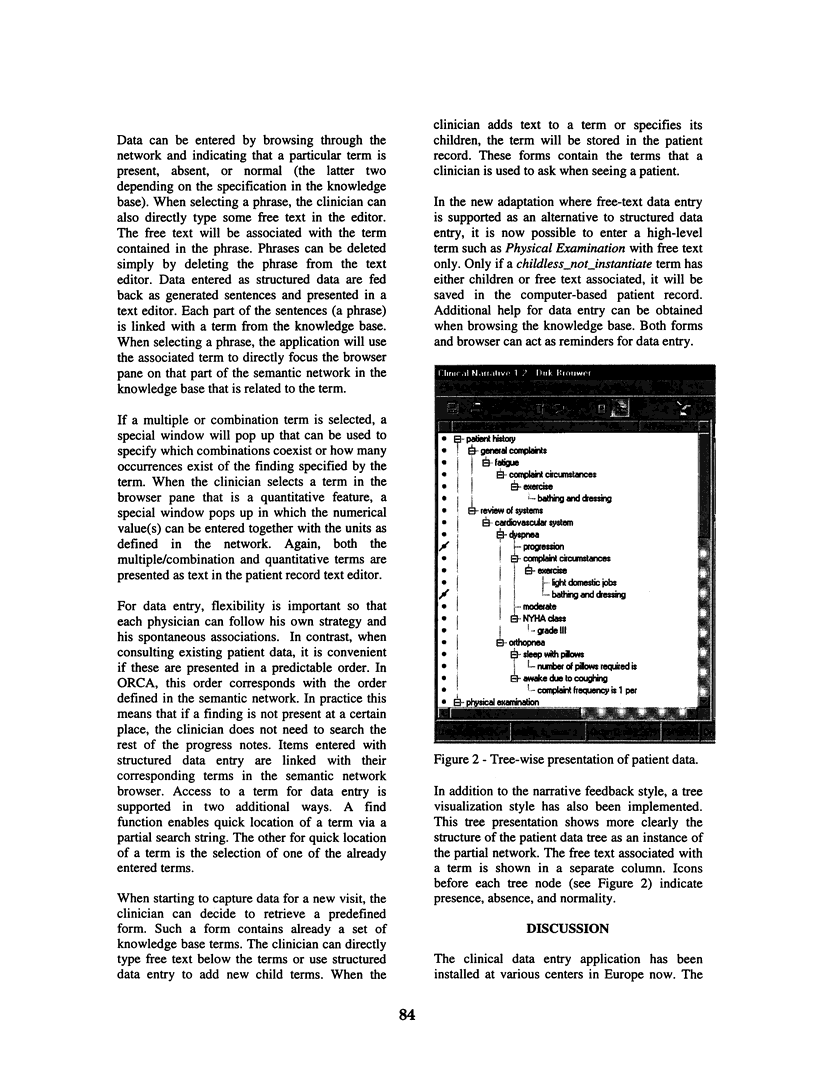
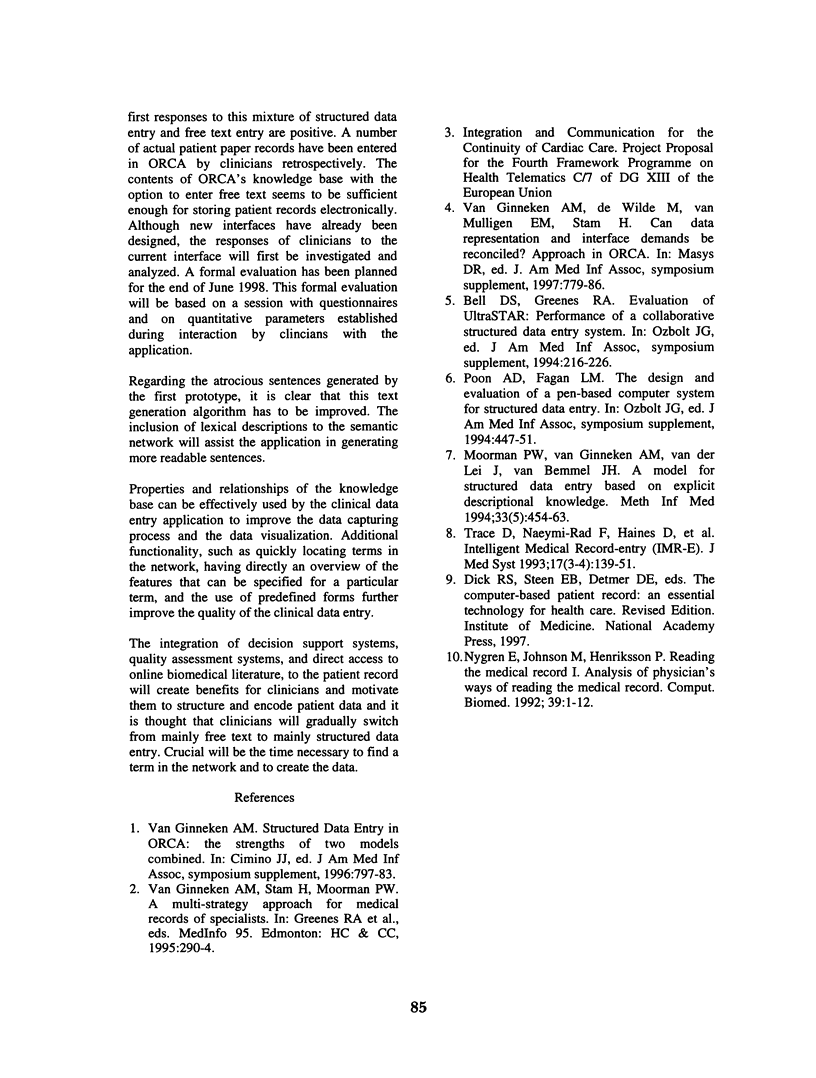
Images in this article
Selected References
These references are in PubMed. This may not be the complete list of references from this article.
- Bell D. S., Greenes R. A. Evaluation of UltraSTAR: performance of a collaborative structured data entry system. Proc Annu Symp Comput Appl Med Care. 1994:216–222. [PMC free article] [PubMed] [Google Scholar]
- Moorman P. W., van Ginneken A. M., van der Lei J., van Bemmel J. H. A model for structured data entry based on explicit descriptional knowledge. Methods Inf Med. 1994 Dec;33(5):454–463. [PubMed] [Google Scholar]
- Nygren E., Henriksson P. Reading the medical record. I. Analysis of physicians' ways of reading the medical record. Comput Methods Programs Biomed. 1992 Sep-Oct;39(1-2):1–12. doi: 10.1016/0169-2607(92)90053-a. [DOI] [PubMed] [Google Scholar]
- Poon A. D., Fagan L. M. PEN-Ivory: the design and evaluation of a pen-based computer system for structured data entry. Proc Annu Symp Comput Appl Med Care. 1994:447–451. [PMC free article] [PubMed] [Google Scholar]
- Trace D., Naeymi-Rad F., Haines D., Robert J. J., deSouza Almeida F., Carmony L., Evans M. Intelligent Medical Record--entry (IMR-E). J Med Syst. 1993 Aug;17(3-4):139–151. doi: 10.1007/BF00996938. [DOI] [PubMed] [Google Scholar]
- van Ginneken A. M., Stam H., Moorman P. W. A multi-strategy approach for medical records of specialists. Medinfo. 1995;8(Pt 1):290–294. [PubMed] [Google Scholar]
- van Ginneken A. M. Structured data entry in ORCA: the strengths of two models combined. Proc AMIA Annu Fall Symp. 1996:797–801. [PMC free article] [PubMed] [Google Scholar]
- van Ginneken A. M., de Wilde M., van Mulligen E. M., Stam H. Can data representation and interface demands be reconciled? Approach in ORCA. Proc AMIA Annu Fall Symp. 1997:779–783. [PMC free article] [PubMed] [Google Scholar]




